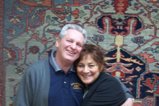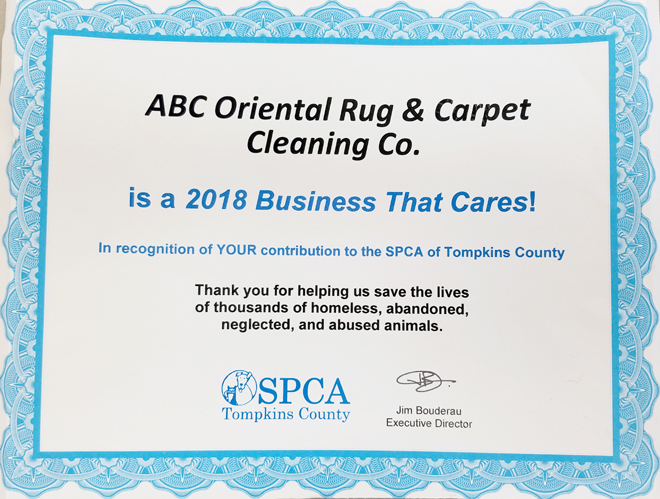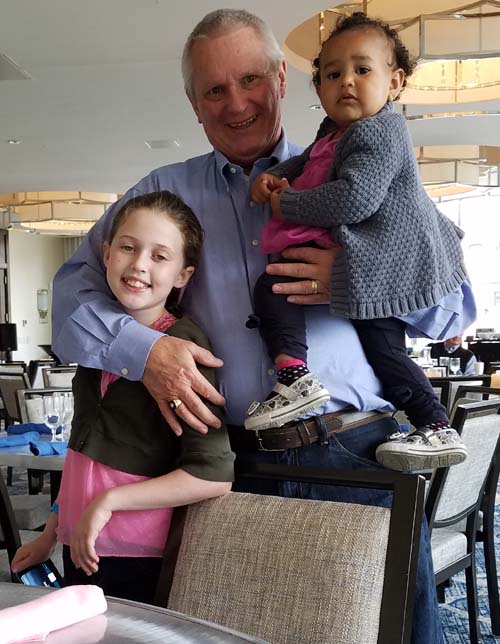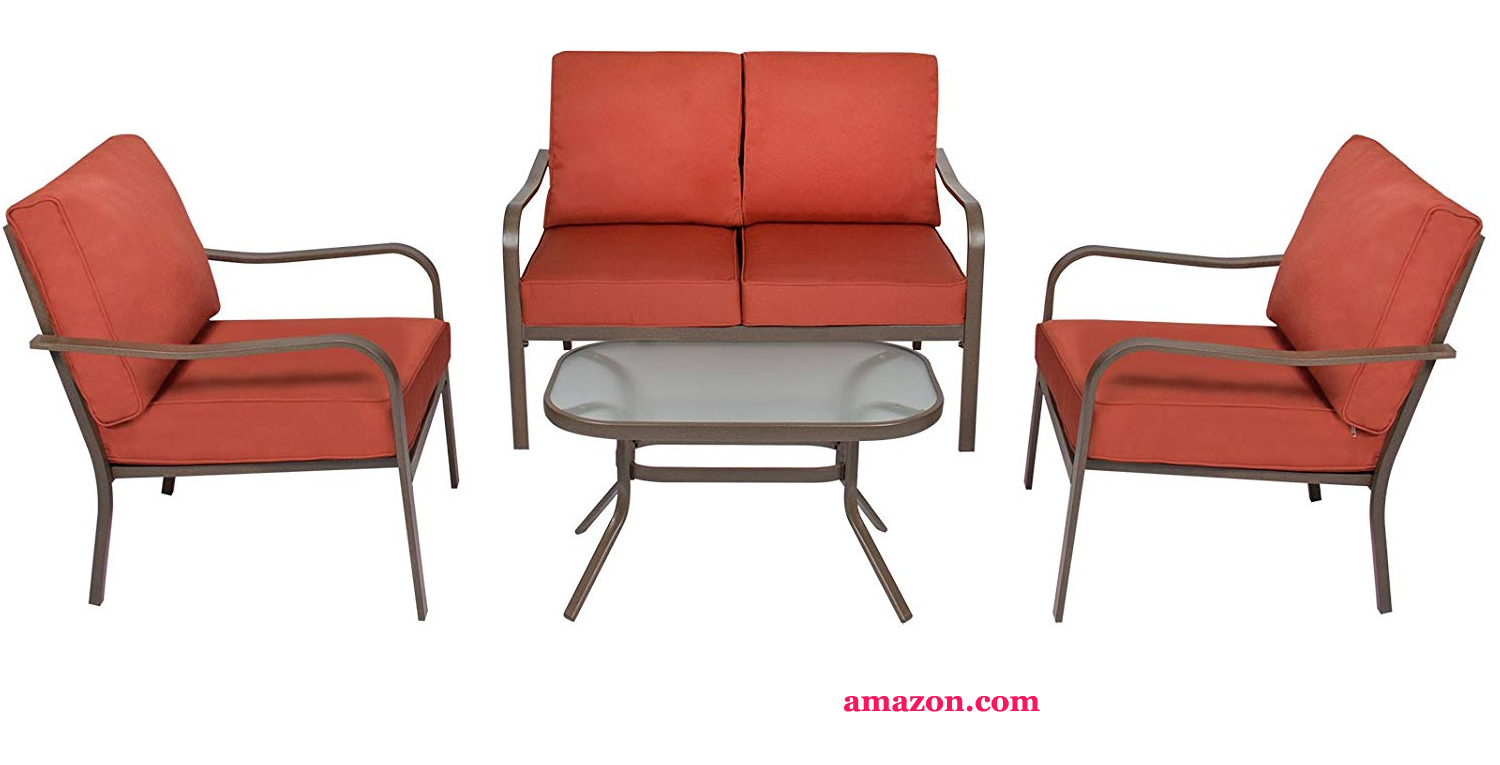ABC MONTHLY NEWSLETTER
JUNE 2019
Welcome to Our Monthly Newsletter!
We hope you will enjoy this month's articles.
This month's topics are:
ORIENTAL RUGS
UPHOLSTERY
NATURAL FIBERS
JUNE SPECIALS
If there is a topic you would like us to cover in one of our upcoming newsletters, please call us at
607-272-1566
or contact us by clicking here.
GREAT NEWS!
GOT QUESTIONS?
NOW YOU CAN TEXT US at
607-272-1566
Fathers' Day is June 16th!
ABC has several gift options for the Fathers in your life...
From June 1 - June 15
Fathers' Day Specials
#1 All orders receive a coupon for FREE CAR MAT CLEANING
#2 ABC will also take 50% OFF Dad's favorite CHAIR CLEANING
#3 Help Dad launch his boat-50% OFF BOAT RUG CLEANING
And
All During The Month Of June...
Jump start your summer cleaning with
20% OFF your PATIO FURNITURE CLEANING
Call NOW to Schedule - 607-272-1566
or come in to our plant and offices
at 130 Cecil Malone Drive - Ithaca, NY
**NOTE: Minimum charges apply. Please call office for more information.
DERBEND ORIENTAL RUGS
LOCATION
Derbend oriental rugs (Derbent, Derabend) are a type of Northern Caucasus rug made in and around the city of Derbend (Derbent) in the upper northeast corner of what is now the Russian Republic of Dagestan. The Republic is bordered on the East by the Caspian Sea and on the South by Azerbaijan.
The port of Derbent (as it is now called) is Russia's southernmost city and may very well be the oldest city in Russia as well. Its strategic location, occupying a narrow gateway between the Caspian Sea and the Caucasus Mountains, has for centuries made it vulnerable to many different conquerors and cultures. These have included the Persian, Arab, Mongol, Timurid, Shirvan, and Iranian kingdoms. The 1813 Treaty of Gulistan put the city into Russian hands.
When the Russians set up their administrative districts, they combined the mountainous area of what is now Dagestan with the flat area near the sea known as Derbend (Derbent), and called the entire area Dagestan.
Today, although Russian is the official language, there are more than 30 commonly spoken local languages. Unfortunately, this region is a very heterogeneous, ethnically diverse area and can tend to be unstable.
WEAVING IN THE CAUCASUS MOUNTAINS
Weaving in the Caucasus regions can be traced back as far as the Bronze age. Along with the Derbend oriental rugs, other notable rugs from the Northern Caucasus region include the Kuba and the Dagestan.
The Kazak, Karabagh, Gendje, Moghan, Talish, and Shirvan rugs were the major rugs from the Southern Caucasus region.
Antique rugs from these regions were often mislabeled as coming from major collecting points, rather than the actual area where they were woven, making positive identification difficult.
CONSTRUCTION OF DERBEND ORIENTAL RUGS
Derbend oriental rugs share many of the general features of the Dagestan rugs but are typically much bolder and more crude. They also are larger in size, are more coarse, have longer pile, fewer colors, and figures are not clearly defined.
FOUNDATION
The warp (up and down cords) and weft (side to side cords) are usually wool but the Turkoman influence on the Derbend area resulted in goat's hair being used for the warp in many of the rugs (rather than wool) giving the rugs a wilder appearance with a darker hue.
PILE
The pile is wool and, as mentioned above, it is usually longer than the other rugs in the area.
KNOT
The knot is the symmetrical or Turkish knot.
SIDES
The sides of the Derbend oriental rugs are overcast, some with several colors of yarn.
ENDS
The ends are typically finished with 4 rows of knots in the solid selvage where the fringes grow out. Often, however, the warp and weft are woven together in a broad web (also borrowed from their Turkoman neighbors).
DESIGN OF DERBEND ORIENTAL RUGS
As mentioned above, the Derbend oriental rugs followed many of the general features of the Dagestan oriental rugs, such as the use of lattice patterns and geometric flowers.
There can be a main design with a large star (such as an elongated Yomud star) or some other geometrical figure which may be repeated 3 or 5 times diagonally on a field of blue or red. Figures on a blue field will often have predominantly red and saffron yellow colors. If the field is red, the figures will usually have blue and yellow colors.
The latch-hook motif can be an important part of the design.
Border stripes are clearly defined as in most of the other Caucasian rugs.
The Derbend oriental rugs have a natural sheen or luster. This is a characteristic of many of the Caucasian rugs. It may come from the yarn being rubbed under the coarse woolen socks of the weavers or it may be a result of the yarn being dyed without washing out the natural oil from the wool, making the yarns spread out into a cluster of fibers which reflect the light.
DERBEND ORIENTAL RUGS TODAY
To continue reading about Derbend oriental rugs, please continue reading here.
UPHOLSTERY FABRIC ID
Upholstery fabric ID can provide a consumer with crucial information about the cleanability, general maintenance, and durability of upholstered furniture. It can give clues as to whether or not a certain fabric will hold up to pets, children, spills, stains, sun, etc. The plethora of different types of available upholstery fabric can be very confusing to someone seeking the best option for his or her individual or family needs.
Upholstery fabric can consist of natural or synthetic fibers and any combination of the two. The type of fabric and the type of weave as well as the particular finish that may have been applied to the fiber and the type of dye, and whether it is colorfast or not, are all matters of concern to help determine the best fit for the purchase of a quality piece of upholstered furniture (which could be one of the more expensive items to purchase for a home or business).
When a consumer has a general knowledge of upholstery fiber ID (which includes the type of weave, finish, and dyes) of the fabric covering a particular piece of upholstered furniture, he or she can then make an informed purchase decision.
UPHOLSTERY FABRIC ID - NATURAL FIBERS
There are 3 types of natural fibers:
- Cellulose Fibers
- Protein Fibers
- Regenerated Cellulose
CELLULOSE FIBERS
COTTON
Advantages:
- 15 % stronger when wet.
- Treating it chemically increases the strength and adds luster.
- Most important quality is absorbency. It will absorb cleaning solutions as well as perspiration and oils.
- Cotton fibers are not actually susceptible to shrinkage until manufactured, when they are stretched on the loom, and then return to their original length in the first washing. (Cotton does not shrink in the rain while growing!) Subsequent washing will usually not cause more shrinkage.
- Cotton is naturally moth resistant.
- Does not melt.
Disadvantages:
- Very flammable.
- Susceptible to mildew and silverfish.
- Cotton also has a tendency to brown or turn yellow, called cellulose browning. This can usually be reversed by a professional procedure.
- Cotton with a glaze has a shiny finish which is usually permanent but may be removed during cleaning.
- Cotton can be damaged by sunlight and oxidation.
Cleaning:
- Clean or treat with high alkaline cleaning solution if dyes are colorfast.
- The dye, finish design, etc. determines whether the fabric should be wet or dry cleaned.
LINEN
Advantages:
- Linen is spun from flax fiber and is similar to cotton.
- It is 2 to 3 times stronger whether wet or dry.
- Shrinks less than cotton.
- Naturally moth resistant.
Disadvantages:
- Has poor fiber elasticity and is therefore naturally stiff.
- Can be damaged by sunlight and oxidation as can cotton but at a slower rate than cotton.
- Not very resilient and wrinkles easily.
Cleaning:
- Resistant to alkalies.
- Avoid strong acids when cleaning or treating.
- Can be wet or dry cleaned.
PROTEIN FIBER
WOOL
Advantages:
- One of the most durable, hard-wearing fibers.
- Wool fiber has elasticity, resilience, and bulk.
- Wool can absorb 30% of its weight in moisture, thus making it easy to dye.
- It is resistant to abrasion and wears well.
- Wool has a natural crimp and will resist crushing and distortion and recover its shape well.
- Is non-flammable.
- Does not soil easily.
- Resists and recovers from wrinkles.
- Can be dyed easily.
Disadvantages:
- Excessive moisture could lead to mildew or mold if not dried thoroughly.
- Loses strength when wet.
- Wool shrinks when subjected to heat and moisture.
- It is more resistant to sunlight than cotton but will yellow over time.
- If not specially treated, wool can be damaged by textile insects such as moths and carpet and furniture beetles.
Cleaning:
- Avoid strong alkalies and concentrated solutions of strong acids when cleaning or treating.
- Can be wet or dry cleaned (wet only if colorfast).
SILK
Advantages:
- Silk fibers are the strongest animal/protein fibers.
- Their elasticity and high absorption characteristics allow for finish applications and dye techniques.
- Accepts dyes well.
- Can have low abrasion resistance.
Disadvantages:
- Can be easily yellowed and damaged by age, sunlight, and perspiration.
- Tends to water spot if not treated
Cleaning:
- Dry cleaning is the safe recommendation because water can produce watermarks and dye bleeding.
REGENERATED CELLULOSE FIBERS
RAYON
Advantages:
- Rayon is sometimes known as imitation silk.
- Usually blended with cotton and synthetics.
- Low resistance and poor dimensional stability (shrinkage).
Disadvantages:
- Rayon dries hard when exposed to air but is inherently weak.
- It can absorb more moisture than cotton or linen but the fibers swell, reducing its strength by 50%.
- Wrinkles easily when wet.
- Poor resistance to abrasion.
- Susceptible to mildew damage.
- Extended exposure to sunlight can be damaging.
- Rayon can shrink more and more each time it is wet but does not return to its normal length.
Cleaning:
- Avoid acids and strong alkalies when cleaning or treating.
- Wet or dry clean.
ACETATES
Advantages:
- Resistant to moisture, mold, mildew, and moths.
- Resists shrinking.
- Resists wrinkling.
Disadvantages:
- Acetates, like rayon, are weaker when wet.
- Also, like rayon, they are usually found in blended fabrics.
- Not abrasion resistant.
- Sunlight and oxidation deteriorates acetates.
Cleaning:
- Weakened by strong alkalies and strong acids.
- Acetone completely dissolves acetates.
- Can be wet or dry cleaned.
UPHOLSTERY FABRIC ID -
SYNTHETIC FIBERS
NYLON
Advantages:
- One of the best-wearing fibers due to its high strength and abrasion resistance.
- Resilient.
- Low water absorbency.
- Easily cleanable.
- Is elastic and wrinkle resistant.
- Resistance to alkaline substances, mildew, and insect damage
- Low moisture absorbency means quick drying and dimensional stability.
- Can be dyed with different types of dye.
- Very elastic and can recover well from crushing and distortion.
- Can be cross-dyed by combining two or more types of nylon, each accepting a different type of dye to make a tweed or multicolored effect.
- Abrasion resistant.
Disadvantages:
- Moderately resistant to ultraviolet light but can be damaged by prolonged exposure to sunlight.
- Tends to pill due to its high strength.
Cleaning:
- Can be damaged by strong acids.
- Some old, set-in stains can be stubborn to remove.
- Oily soil may need special treatment.
- Usually wet cleaned.
Common Trade Names: Anso, Antron, Ultron, Zeftron, Enkaloft.
POLYESTER
Advantages:
- Often blended with cottons.
- Wrinkle resistant.
- Resilient.
- Dimensionally stable.
- Resistant to moths and mildew.
- Low level of moisture absorbency so dries quickly.
- Abrasion resistant.
- Resists sunlight damage.
Disadvantages:
- Not as strong as nylon.
- Is difficult to dye or stain because of its dense molecular structure.
- May attract oily soil and oil-borne stains.
- Not much pure polyester upholstery fabric is manufactured.
Cleaning:
- Cleaning or treating with acids is safe.
- Strong alkalies will damage it.
- Usually wet cleaned but may need a combination of dry and wet cleaning if heavily soiled.
Common Trade Names:Dacron, Fortrel, Kodel, Trevira.
OLEFIN
Advantages:
- Has the lowest moisture absorbency of all fibers which means it has excellent stain resistance and cleanability.
- Water based spills remain on the surface for a short time instead of penetrating the fabric.
- It is relatively strong.
- Colorfastness is excellent.
- Resists sunlight damage.
Disadvantages:
- Oils can enter the fiber structure and oxidize, leaving permanent discoloration.
- It is resistant to abrasion but texture distortion can occur.
- It is not resilient and does not have good elastic recovery.
Cleaning:
- Wet cleaning.
ACRYLIC
Advantages:
- Has wool-like 'hand'.
- Resists shrinkage.
- Resistant to moisture.
- Low moisture absorbency helps it resist stains.
- Can be cross-dyed like nylon to produce multi-color effects.
- The strength of acrylic is fair to good, slightly lower when wet.
- Very resistant to UV light.
- It is not resilient and does not have good elastic recovery.
Disadvantages:
- Very sensitive to heat.
- It dries slowly since water can be trapped between its fibers.
- Tendency toward pilling.
- Tendency to retain oily stains.
Cleaning:
- Not affected by cleaning or treating with acids or alkalies.
- Can be damaged by strong concentrated acids and hot, strong alkalies.
- Resistant to bleaches.
- Can be wet cleaned.
Common Trade Names: Acrilan, Creslan, Orlon Zefran.
To find out more about upholstery fabric ID including types of weaves and finishes, dyeing, and cleaning, please continue reading here.
SISAL NATURAL FIBER
HISTORY
Sisal natural fiber is derived from the inside of the large leaves of the Agave Sisalana plant, native to Southern Mexico. It is the same cactus used to make aloe and tequila!
Sisal natural fiber has been cultivated since pre-Columbian times but it was first cultivated for commercial use in the late 1930s when its economic benefits were discovered in countries across the world.
The development of cheap synthetic fibers in the 1980s and 90s sent the sisal market plummeting. The 21st century has seen a resurgence of the use of sisal, as well as its waste byproducts, due to the growing public awareness of natural fibers in general and the fact sisal is sustainable and environmentally friendly.
Sisal used for rope and twine are the traditional uses for this fiber. However, sisal is such a diverse resource material, there has been a growth in new non-traditional uses of this plant as well.
Today, sisal is sustainably farmed across the world. Brazil, and right behind it, Tanzania, are the largest producers. The fiber of the sisal agave is also very similar to that if its relative, henequen (Agave Fourcroydes).
THE SISAL PLANT
The Sisal plant is very hardy and grows well all year round in hot climates and arid regions, often those areas not suitable for other crops. It can be cultivated in most soil types except clay.
The sisal plant usually grows to about 3 feet high and is around 15 inches wide. The leaves from which the fiber is extracted are fleshy and rigid and grow out from the stalk in lance-shaped leaves that are gray to dark green. Each lance is 2 to 6 feet long and 4 to 7 inches across, ending in a sharp spine.
The plant can be harvested from 3 to 5 years after being planted and its productive life can be as much as 12 years (though usually falls between 4 to 8 years). Each plant will produce approximately 300 leaves (depending on location, altitude, level of rainfall, and variety of plant).
At some point anywhere from 4 to 8 years, the mature plant will send up a central flower stalk which can reach up to 20 feet high. Unpleasant smelling yellow flowers will emerge. After these flowers start to die, small plants develop called bulbils which fall to the ground and take root. Similar to other agave species, the old plant dies after flowering is completed.
Besides the bulbils, young plants can also be propagated from the rhizomes or underground stems of mature plants. These young plants are usually kept in nurseries for the first 12 to 18 months They are then transferred to the field at the beginning of the rainy season.
The outer leaves are cut off close to the stalk as they reach full length. The initial harvest is usually about 70 leaves from each plant, averaging around 25 leaves thereafter. The leaves need to be crushed, washed, and dried first before the fibers within them can be used.
The fibers to be extracted lie lengthwise in the leaves, most of them near the leaf surfaces. The fleshy pulp is very firm and must be scraped away by hand stripping or by a mechanical decortication process. The fibers must be removed from the leaves as soon as possible after they are cut in order to avoid the risk of damage during the cleaning process.
ADVANTAGES OF SISAL NATURAL FIBER
- Environmentally friendly.
- Renewable resource.
- 100% biodegradable.
- Absorbs more carbon dioxide than it produces.
- Flame retardant.
- Anti-static.
- Noise absorbent.
- Helps reduce soil erosion with its extensive root system and thus contributes positively to watershed management.
- Its organic wastes and leaf residues can be used to generate bioenergy, produce animal feed, fertilizer, and ecological housing material.
- Can be planted as hedges to act as effective vegetative fences to protect crops and forests from predatory animals and intruders.
- Accepts color well and can be dyed.
- One of the most durable fibers and can be used in high-traffic areas such as hallways and entryways when woven into area rugs.
DISADVANTAGES OF SISAL NATURAL FIBER
- Fibers are strong and stiff so less comfortable underfoot when woven into area rugs and carpets.
- Very susceptible to moisture damage. Avoid placement of rugs in rooms where spills are common such as the kitchen and dining room. Also avoid bathrooms, basements, and exteriors such as patios or decks.
- Can be slippery after exposure to a lot of wear. Not for use on stairs.
- The fiber is porous so it can stain and mildew fairly easily if spills are not cleaned up immediately.
- Humidity can affect sisal badly. It can wrinkle with too much moisture and will never be quite the same.
- Very susceptible to stains. An anti-stain treatment should be applied.
- Most stains can be removed with a dry-cleaning solvent but follow directions carefully. (See Below)
To find out more about sisal natural fiber including its many uses, both traditional and non-traditional, as well as the cleaning and maintenance of sisal natural fiber rugs and stain removal procedures, please continue reading here.
THANK YOU!! WE LOOK FORWARD TO CONTINUING TO SERVE YOUR TEXTILE CLEANING AND REPAIR NEEDS!
Get New Posts Right To Your Inbox!
Get our monthly newsletter, just like this one, delivered right to your inbox each day. Just sign up and we will send you the best new articles and videos as they become available.
Your email address will NEVER be spammed, sold, or shared. You are welcome to unsubscribe at any time with the link in the email.
"The Cleanest Clean You've Ever Seen."
by
ABC Oriental Rug & Carpet Cleaning Co.
130 Cecil Malone Drive Ithaca, NY 14850
607-272-1566

ABC
Carpet & Rug
Spotting Guide

ABC Oriental Rug & Carpet Cleaning Co. has been family-owned and operated in Ithaca and surrounding areas for more than 48 years.
Our company is a reflection of our family name and pride.
Please Like us on Facebook!
for more information and to find out what we are doing at our business and in the community!
Stay Connected!
Links to Our Services
Allergy Cleaning
Area Rug Cleaning
Oriental Rug Cleaning
Rug Hand & Machine Repair
Upholstered Furniture Cleaning
Tile & Grout Cleaning & Sealing
We are proud sponsors of the SPCA of Tompkins CO:

Newsletter Archives



